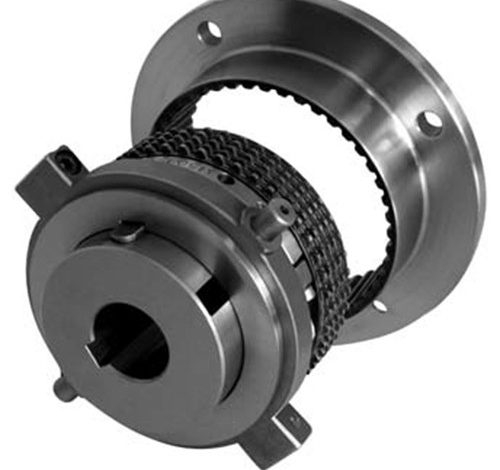Essential Insights on Industrial Clutch Parts for Optimal Performance

Industrial machinery depends on precision and reliability, and one of the most important components at the heart of this reliability is the clutch. From manufacturing plants to farms, clutches allow machines to operate smoothly, manage heavy loads, and perform complex tasks without faltering. Understanding how industrial clutch parts work, what affects their durability, and how to maintain them can make a decisive difference in both performance and long-term costs.
The Anatomy of Industrial Clutch Parts: What Makes Them Tick?
Understanding the Core Components
An industrial clutch connects and disconnects the power between driving and driven elements in a machine. Key components include the clutch disc, pressure plate, flywheel, release bearing, and actuator.
The clutch disc, made of high-friction materials, transfers torque by pressing against the flywheel. The pressure plate applies force to hold the disc in place, while the flywheel acts as both a power stabilizer and the mounting point for the clutch. Together, these parts create the engagement that keeps machinery moving.
The release bearing and actuator handle disengagement. Depending on the design, actuators may be hydraulic or mechanical, each influencing how smoothly the clutch operates. When all these components function harmoniously, machinery runs with consistency, precision, and efficiency.
The Role of Materials in Durability and Efficiency
Materials directly affect the life span and performance of clutches. Friction surfaces may use organic composites, metallic blends, or ceramics, each chosen for different operating environments. For machinery exposed to extreme heat or stress, advanced materials like Kevlar or carbon composites stand out due to their resistance to wear and high temperatures.
Pressure plates and flywheels also benefit from advanced alloys and treatments that increase strength. In corrosive or moisture-rich environments, protective coatings and resistant metals prevent premature failures. Modern innovations such as hard anodizing or specialized plating extend the service life of clutch parts even under demanding conditions.
Common Types of Clutch Designs and Their Benefits
Industrial applications call for different clutch designs depending on operating needs:
- Friction clutches are widely used for their simplicity and effectiveness. Single-disc models are suitable for lighter loads, while multi-disc versions provide higher torque capacity in compact spaces, making them suitable for heavy-duty tasks.
- Hydraulic clutches use fluid pressure to deliver smooth and precise engagement. They minimize wear and are often favored in robotics or precision equipment.
- Electromagnetic clutches rely on electrical signals for fast engagement and disengagement. These clutches excel in applications requiring rapid changes in motion, offering both speed and reduced mechanical wear.
Each design has its strengths, and the right choice depends on torque requirements, environment, and operational goals.
Performance Matters: Choosing the Right Clutch
Identifying Your Application
Every machine has unique needs. A conveyor system might need a clutch designed for frequent starts and stops, while agricultural machinery may require components that withstand dirt, moisture, and heavy loads. Environmental conditions, duty cycles, and torque demands should all guide the decision.
Compatibility is equally important. A clutch that does not align with the drive system or lacks proper dimensional fit can compromise efficiency and shorten lifespan.
The Impact of Load Capacity
Load capacity, defined by torque ratings, determines how much stress a clutch can handle. Both static and dynamic loads must be considered. Overloading can cause overheating, excessive wear, or outright failure. Temperature, usage frequency, and environmental conditions can all affect how well a clutch handles its rated capacity. Regular monitoring and adherence to manufacturer specifications safeguard against premature breakdowns.
Customization for Specialized Tasks
Some industries require tailored solutions. Manufacturers may adjust clutch sizes, add coatings, or redesign actuators to meet unique demands. In modern applications, smart clutches equipped with sensors provide data on performance and wear, allowing predictive maintenance. Customization ensures clutches are not only fit-for-purpose but also aligned with broader efficiency and reliability goals.
Maximizing Lifespan: Maintenance Best Practices
The Importance of Regular Inspections
Inspections help catch problems before they escalate. Signs to watch for include uneven wear on clutch discs, discoloration from overheating, and warping of plates or flywheels. Vibrations, noises, or sluggish actuator responses may indicate alignment or hydraulic issues. Routine cleaning and checking hydraulic fluid levels also extend performance.
Maintenance Practices That Extend Service Life
Effective practices include lubrication with high-quality products, keeping clutch environments free of contaminants, and following proper break-in procedures for new parts. Training staff on correct handling ensures clutches are operated within their limits. Recording inspection results also helps spot patterns and refine preventive maintenance schedules.
Signs Your Clutch Needs Immediate Attention
Some red flags demand immediate action:
- Slippage during operation, indicating worn friction material.
- Grinding, clicking, or chirping noises during engagement.
- Rising operating temperatures or signs of overheating.
- Oil leaks in hydraulic systems.
- Erratic or unresponsive actuator behavior.
Prompt responses prevent small issues from snowballing into full system failures.
Innovations in Clutch Technology: What’s Ahead?
Smart Clutch Systems
Automation is reshaping industrial operations, and smart clutches are part of this shift. With integrated sensors and analytics, these systems adjust automatically to load conditions, optimize performance, and predict maintenance needs. This minimizes downtime and reduces energy use while extending service life.
Sustainability in Clutch Design
Eco-friendly designs are gaining traction. Manufacturers are adopting bio-based composites for friction surfaces and prioritizing energy efficiency through reduced friction losses. Recycling programs are also expanding, with components designed for easier reclamation and reuse. These efforts align with the global push for sustainable manufacturing.
The Role of Research and Development
Ongoing R&D continues to unlock new materials, smarter integration, and lighter, stronger designs. From AI-driven analytics to IoT-enabled performance tracking, the clutch industry is advancing toward higher precision and reliability. Collaborative efforts among manufacturers and research institutions accelerate innovation, ensuring clutches evolve alongside the machinery they power.
Final Thoughts
Industrial clutch parts may not always be the most visible components, but they are indispensable for performance and reliability in heavy machinery. From understanding their anatomy and materials to choosing the right design and maintaining them properly, every step impacts efficiency and longevity. With emerging smart technologies and sustainable practices shaping the future, clutches are set to become even more integral to the evolving demands of industrial operations.




